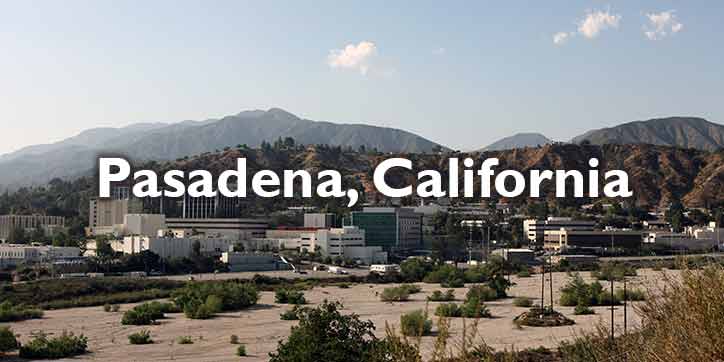Pasadena, known colloquially as the City of Roses, Crown City, and Rose Town, may not possess the glamour that Hollywood is known for the world over; however, it still shines at the heart of the San Gabriel Valley, providing plenty of things to do and see for residents of Los Angeles. Taking its name from the native Chippewa language meaning “Crown of the Valley,” Pasadena is located just 11 miles northeast of Downtown LA and with a population of 137,000 ranks as only the 41st largest city in California – quite astonishing considering there’s enough infrastructure and local businesses established here to rival other states’ capital cities.
Incorporated in 1886, Pasadena can boast famous celebrities such as Meryl Streep, Mandy Moore, John C. Reilly, and Terry Crews as residents within this “Bungalow Heaven,” and whether you want to taste your first Rose Bowl or Doo-Dah Parade, experience your cinematic La La Land moment along Colorado Bridge or hike a canyon for views of breathtaking waterfalls, you’ll be glad to put Pasadena on your itinerary for an open space break from the chaos of downtown LA.
Interactive Map of 25 Things to Do in Pasadena (CA)
1. Rose Bowl Stadium
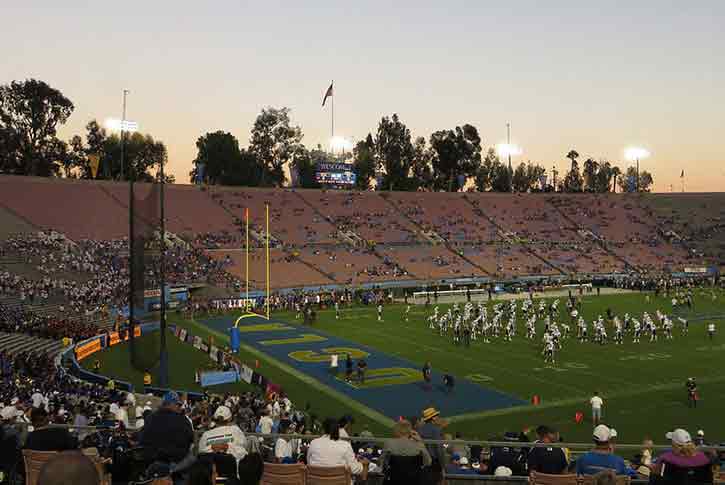
Seen as the nation’s college football Mecca, the Rose Bowl Stadium has been the main Pasadenan landmark since its opening in 1922. With a capacity of 92,542, it’s the 16th largest stadium globally and has hosted the 1994 FIFA World Cup, the 1999 FIFA Women’s World Cup, and 5 Superbowls – in fact, the term ‘bowl’ in American Football originated from the Rose Bowl. If you happen to be visiting Pasadena during the New Year period, don’t be shocked at the sheer influx of people – the Rose Bowl Game, traditionally played on Jan 1st – “The Granddaddy of them All” – is the oldest currently operating Bowl Game and since 1945 has been the highest attended.
Surprisingly it doesn’t play host to an NFL team. Still, its importance in Californian sports history means seats are consistently sold out to many of its events, including 4th of July fireworks and concerts for acts such as U2, The Rolling Stones, Metallica, and Depeche Mode. On non-event days, it’s worth checking out the bronze statue of soccer star Brandi Chastain and the Rose Bowl Flea Market – still going strong after 50 years.
2. Eaton Canyon Falls
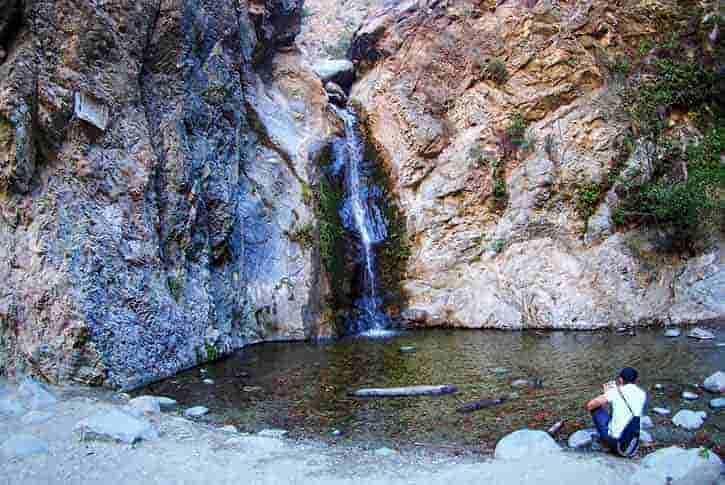
The 198 acres of Eaton Canyon offer a welcome nature respite for many who live in the Greater Los Angeles area, with hiking, horseback activities, barbecue, and picnic areas appealing to differing tastes. Boasting a 500ft elevation gain and originally called El Precipicio by the Spanish due to the steepness of the gorges, the Canyon was named after Judge Benjamin Eaton, the first person to use irrigation from Eaton Creek to grow grapes.
A single 3.5-mile trail leads hikers to the jewel of Eaton Canyon – a 40-foot waterfall where those thoughtful enough to bring swimwear can enjoy cooling off in waist-deep water. Nature lovers will enjoy spotting the various amphibians, reptiles, mammals, and birds on the site – the Canyon is home to tree frogs, squirrels, chipmunks, raccoons, deer, rattlesnakes, hummingbirds, owls, hawks, parrots, and eagles. The Nature Center, whilst also hosting exhibits, also lead walking tours, bird watching tours, and children’s activities – a great starting point for your visit to the Canyon.
3. Norton Simon Museum
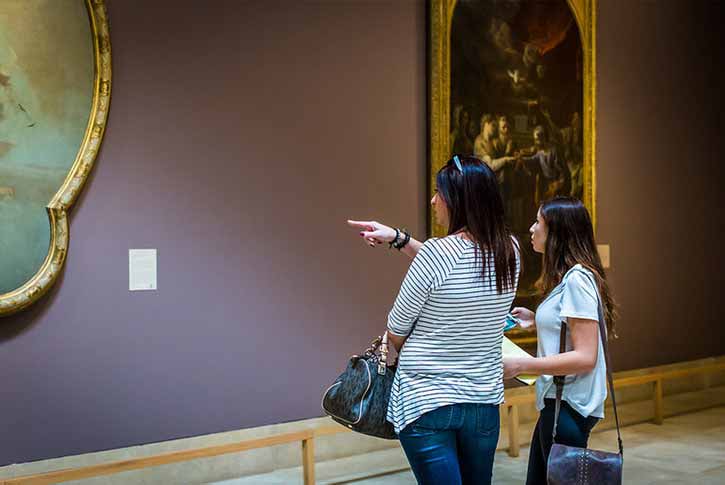
What started as the Pasadena Art Institute in 1922 quickly became the most extensive fine art collection in Southern California. Named after entrepreneur, industrialist, and philanthropist Norton Simon after he saved the museum from financial ruin, Simon steered the museum to be a bellwether of the next big name in art, launching Marcel Duchamp’s career and hosting exhibits featuring Andy Warhol, Claes Oldenburg, and Joseph Cornell.
Simon was someone who deeply believed in the power of art to communicate, and the collection the museum now possessed demonstrates his vision. Featuring a collection containing works from Picasso, Matisse, Warhol, Raphael, Van Gogh, Cezanne, Monet, Rembrandt, Gauguin, and Modigliani, as well as a meticulously curated Sculpture Garden featuring Rodin’s “The Thinker” and “The Burghers of Calais” as well as works by Barbara Hepworth, Henry moor, Jacques Lipchitz and Pierre August Renoir, this is a place that is worthy of at least half a day on your itinerary.
4. The Huntington Library, Art Museum, and Botanical Gardens
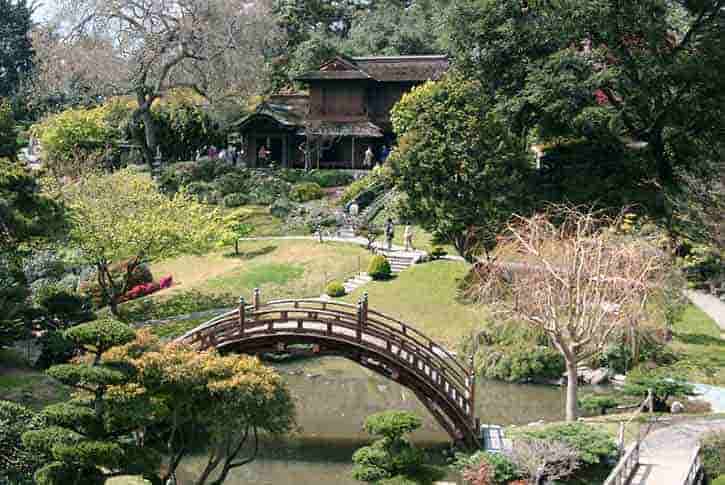
The sprawling grounds of the Huntington Library, Art Museum and Botanical Gardens are so extensive and fascinating we honestly think you’ll struggle to see everything in a single trip. The Library is a collections-based research and educational institution serving scholars and the public and boasts some of the rarest and famous works ever put to paper. Highlights include the Ellesmere Chaucer Manuscript of The Canterbury Tales, one of only 11 surviving vellum copies of the Gutenberg Bible, the first two Quartos of Shakespeare’s Hamlet, Isaac Newton’s personal copy of Principia with Newton’s own handwritten annotations, as well as first editions and manuscripts by Mark Twain, Jack London, William Blake, and William Wordsworth.
The 120-acre botanical gardens are the perfect place to lose yourself in nature and experience a taste of different horticultural regions such as East Asia and the Pacific, Desert and Jungle climates, as well as a dedicated kids garden and herb garden. You may have even seen the gardens before – as a common location for Hollywood, the botanical gardens have featured in Beverly Hills Cop II, Heathers, The Wedding Singer, Charlie’s Angels, The Hot Chick, Intolerable Cruelty, Memoirs of a Geisha, The Muppets and Bridesmaids.
5. Kidspace Children’s Museum
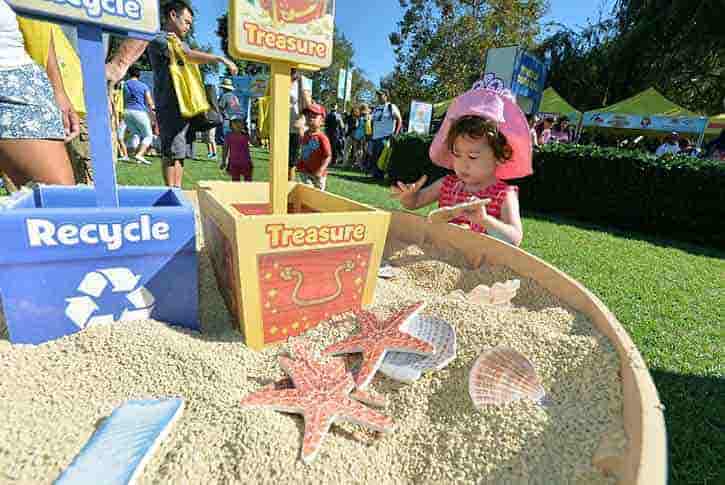
Initially founded at Caltech in 1975, the Kidspace Children’s Museum now spans 3.5 acres in a location next to the Rose Bowl and sees 378,000 visitors a year. With the aim of nurturing the potential of the young through child-driven experiences to inspire learning and creativity, the museum can boat 40 hands-on exhibits that allow kids to form the building blocks of lifelong learning.
Featuring collaborations with leading Pasadenan organizations such as the Jet Propulsion Laboratory and the Art Center College of Design, exhibits include Arroyo Adventure, Storyteller Studio, Physics Forrest, Art Tunnel, and the Imagination Workshop, as well as facilities such as a rope bridge and climbing wall. For that taste of nature, kids can also interact with an active beehive and explore a giant ant tunnel, whilst those who wish to continue learning after their visit can take advantage of the numerous projects and experiments available on their “Families at Home” online resource.
6. The Gamble House

Originally built in 1908 for David B. Gamble of the Proctor & Gamble Company, famed architects Charles and Henry Greene were well known for their customization and groundbreaking architectural influences in their works. The American Craftsman bungalow was built with Anglo Japanese style elements and today stands as one of the more well-preserved Greene and Greene properties around – many of which (Including the Robert R. Blacker house) were stripped and gutted of their components and sold for huge amounts purely from the Greene and Greene connection.
In 1966, after members of the Gamble family found that potential buyers wanted to strip the property, Gamble House was turned over to the City of Pasadena and USC School of Architecture, and the property was declared a National Historic Landmark in 1977. Today there are two 5th year USC School of Architecture students who live at the property full time, changing annually. Movie buffs may recognize the exterior – whilst its sister property Robert R Blacker house served as the interior, the Gamble house served as the exterior of Doc Brown’s house in the 1985 classic Back to the Future.
7. St Andrew Catholic Church

Whilst the parish was founded in 1886, the St Andrew’s church structure started construction in 1927. Costing about $1 million at the time (approximately $15 million in today’s money) and with a tower modeled on the Santa Maria in Cosmedin and an interior modeled on the Basilica of Santa Sabrina in Rome, Pastor Msgr. McCarthy and architect Ross Montgomery sought the best muralist they could for the project.
Italian Painter Carlo Wostry’s works in Venice, Paris, and New York had already gained a following, and McCarthy and Montgomery gave Wostry free reign over the creative concepts and budget to complete the murals. Taking eight years to complete, Wostry considered the St Andrews pieces as the crowning glory of his career. Even before their move to Pasadena, an exhibit of the murals in Trieste prompted comments that the murals were too beautiful for them to move permanently to California.
8. Fork in the Road
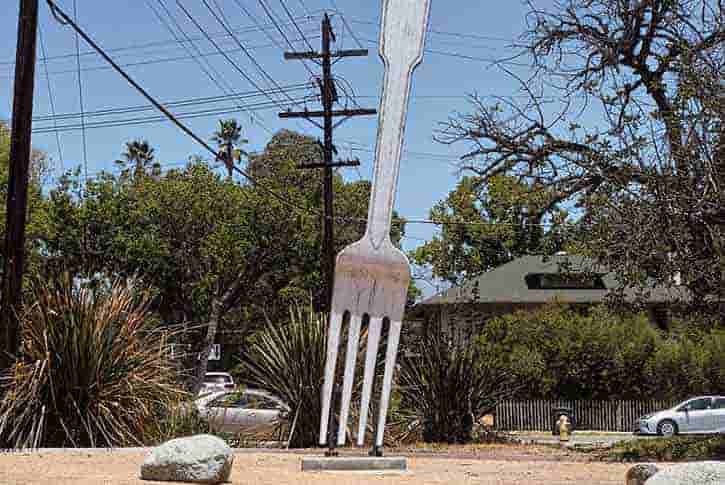
How does one go about improving a boring intersection? Back in October 2009, artists Ken Marshall and Bob Stane decided that the split in South Pasadena Avenue into S St John Avenue needed a bit more life, so one night covertly installed an 18-foot sculpture of a fork into the triangular island, thus creating the Fork in the Road. The fork is actually made of wood but painted to look like metal and is anchored in 2.5ft of concrete – How Marshall and Stane managed to accomplish the installation still baffles the minds of locals.
While the City of Pasadena was expectedly upset with the guerrilla artwork and took it down months later, the local community were in love with the piece. Once all appropriate permits were granted, the structure was reinstalled and unveiled in a ceremony in 2011, which also renamed the island Fork Plaza. Whilst not the World’s Largest Fork (that can be found in Missouri), it gained enough notoriety that in October 2012 it was visited by a 6-ton 28-foot long potato promoting Idaho’s most well known agricultural export.
9. Descanso Gardens

Beautifully capturing Southern California’s landscape, it’s no surprise that Descanso Gardens can boast of 500,000 visitors annually. A popular destination for events and weddings, the gardens primarily focus their collection on Californian native plants and oak woodlands. It features one of the largest collections of camellias in the Western Hemisphere.
Whilst visitors are enchanted by the rose gardens, lilacs, iris, maple trees, and cherry trees, a trip to Descano cannot be complete without visiting Boddy House – a late 1930’s house positioned as a showcase of South Californian design for its era. The Stuart Haaga Gallery offers a unique perspective with exhibits that focus on the gardens as cultural artifacts. Younger visitors will love a trip on the Enchanted Railroad – a 1/8th scale replica of a diesel train that traverses the gardens’ promenade section whilst weary parents can relax and fuel up at the Kitchen at Descano – we hear their Californian Almond Cake is a sellout.
10. Colorado Street Bridge
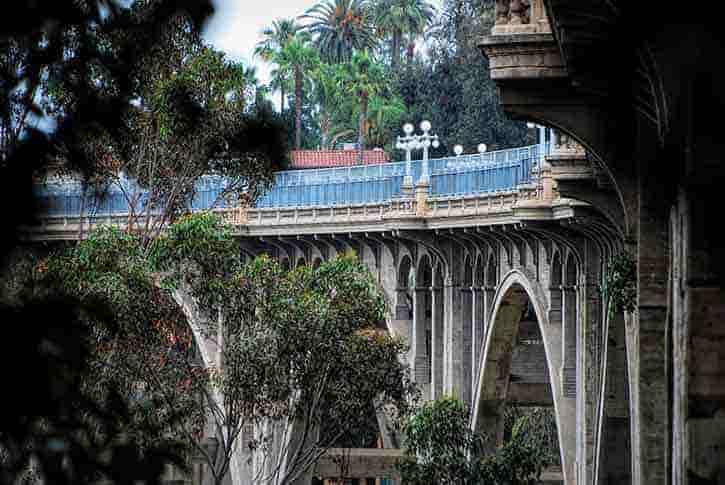
Spaning the Arroyo Seco river, the Colorado Street Bridge was built by architects Waddell and Harrington and revealed to the public in December 1913. Allegedly costing $191,000 at the time ($4.8 million in today’s money), it was the first-ever curvilinear bridge and the tallest concrete bridge at it’s unveiling, with a maximum height of 150 feet (45 meters) and spanning a total distance of 1486 feet (453 meters).
Featuring Beaux Arts style arches, lights, and railings, the bridge has been on the National Register of Historical Places since 1981. Whilst not always loved by Pasadenans throughout the years (it earned the unfortunate moniker “Suicide Bridge” following the Great Depression) it has seen an increased fascination in recent years due to the movie La La Land – the Colorado Street Bridge is the setting for a key conversational stroll between characters Mia (Emma Stone) and Sebastian (Ryan Gosling).
11. Vroman’s
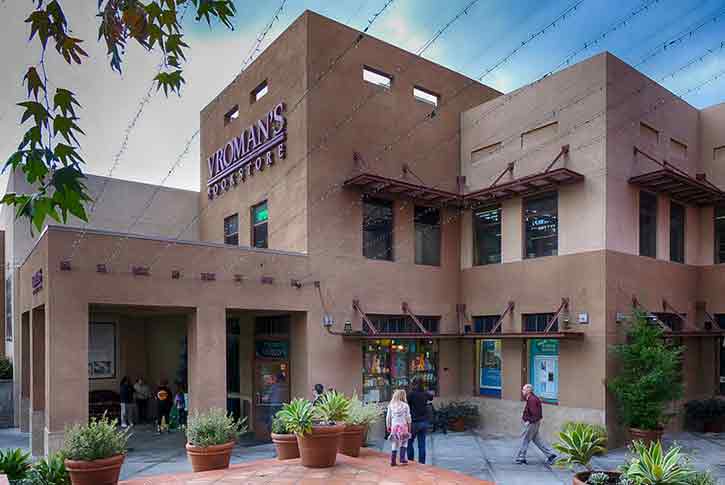
Founded in 1894 by A.C. Vroman, Vroman’s has now become the oldest and largest independent book store in Southern California. Its location on E Colorado Street and proximity to Lake Avenue means that everyone in the community has a place for Vromans in their heart, and as a venue that hosts over 400 free community events a year, you’re bound to see something happen inside if you’re simply strolling in the area.
Events such as children’s storytimes, quiz nights, bake-offs, craft nights, bookmark design competitions, and launch parties keep the calendar at Vroman’s packed and having previously hosted the likes of former Presidents Bill Clinton and Jimmy Carter, Anne Rice, Barbara Walters, Bernie Sanders, David Sedaris, and Salman Rushdie, it’s worth checking out their website to see when the next signing might be.
12. Pasadena Playhouse
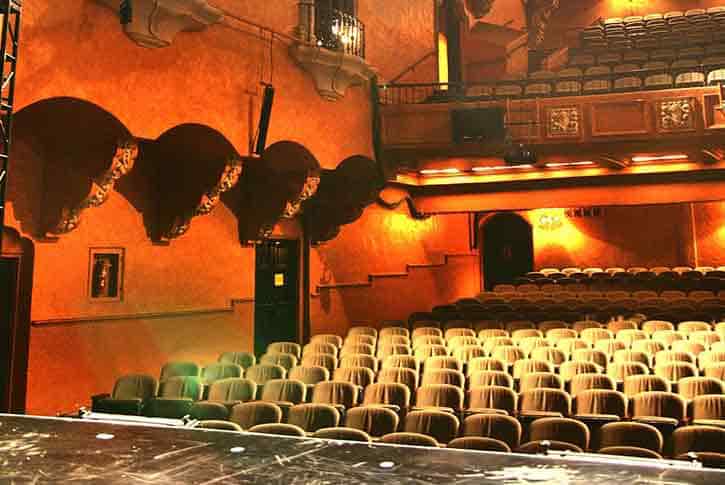
From its inception, Pasadena Playhouse has been a force in the Pasadenan community since being founded in 1917 by Gilmor Brown – the land it sits on was originally purchased thanks to financial contributions from 1000 locals who saw a need for a local theatre in the area. Brown was willing to push boundaries and develop innovative techniques that would challenge both the audience and thespians alike – he pioneered the theatre-in-the-round technique and is one of the very few to produce the entire Shakespeare canon.
His efforts paid off – during the pre-war golden period, the Playhouse was known as the Star Factory due to production studios sending Hollywood scouts to discover the next big talent. The Playhouse School of Theatre Arts was also established and soon came second to Julliard as the arts school of choice in the nation. Following Brown’s passing, the theatre went through a wayward phase, even going dark for 16 years; however, when it reopened in 1986 it’s legacy never wavered from the minds of Californians, and now having seen 500 works debut, 1200 shows played, 500 world premieres and over 1 million audience members experience the 686-seat auditorium, ticket holders never know if the actors they see today will become the icons of tomorrow.
13. Old Pasadena
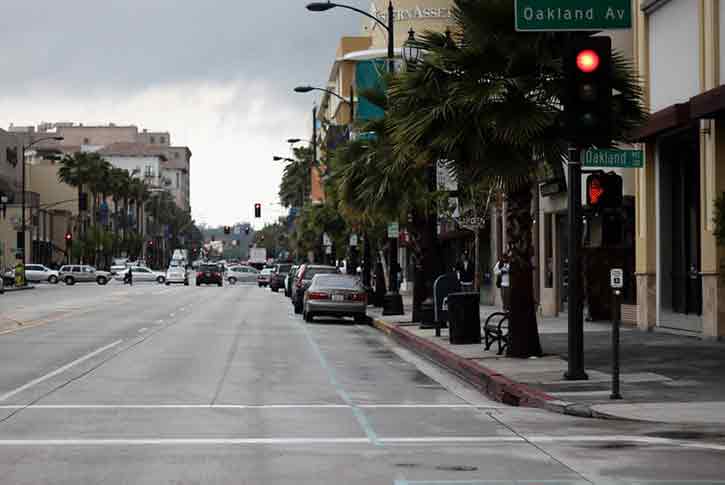
It’s easy to be caught up in all the new and glitzy areas when you’re in the greater LA region, so when an area such as Old Pasadena manages to still retain some of that 1880’s charm and history from its pre-war glory period, it’s somewhere that deserves a place on your itinerary. Spanning 12 blocks and featuring 300 businesses, the City of Pasadena refers to the “Old Town” mantra of Old World Charm with Modern Convenience.
Whilst locals call it “Old Town Pasadena” or “Old Town” for short, at one point it was considered the “Athens of the West” due to the large number of research institutions that made Old Pasadena home, such as the California Institute of Technology (CalTech), Jet Propulsion Laboratory and Aerojet. With Andy Warhol and Marcel Duchamp choosing the area for exhibit debuts, Old Town quickly became synonymous with artistic and liberal protest movements in Southern California. Featuring a plethora of shops, restaurants, bars, museums, galleries, see why famous names such as Gen. George Patten, L. Ron Hubbard, Albert Einstein, and Bobby Fischer had called Old Pasadena home.
14. Almansor Park

Located in the Alhambra area, Almansor Park has been a choice destination for Pasadenans to relax and unwind from the chaos of downtown LA for just over a decade. Name your sport and this park has the facilities – there are tennis courts, lawn bowls, 3 baseball fields, 3 soccer fields, a gymnasium, a basketball court, and a golf course.
Featuring a gazebo, picnic area, and 2 lakes providing a temporary home for wildlife, including turtles, several varieties of fish, ducks, and geese, this is a popular location for wedding and engagement photography. Worth visiting to get your steps in on the 1.1-mile-long jogging track or to search for the bronze statue of baseball great and Alhambra resident Ralph Kiner.
15. Pasadena City Hall
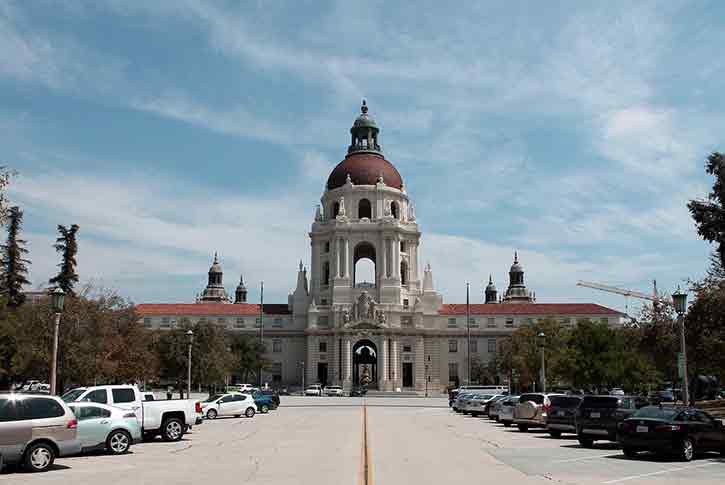
Established in 1927, Pasadena City Hall‘s façade has almost become as synonymous as the famous Rose Bowl Stadium due to Hollywood’s influence. Designed by architects Bakewell and Brown as part of the City Beautiful movement, the building features design elements from both the Spanish Colonial Revival Style and the Mediterranean Revival movements prevalent in California within pre-war architecture.
With the city hall designed to be the main Pasadenan landmark from the planning stages, no expense was spared, and it cost the city 1.3 million ($18,873,796.61 in 2020) to build. It contains 235 rooms, spans 170,000 square feet, and can accommodate 2000 people at a time. Ever since being featured in Charlie Chaplin’s 1940 hit The Great Dictator, Pasadena City Hall has been spotted in Beverly Hills Cop 2, American Pie 2, The Big Bang Theory, and Parks and Recreation; its notoriety was enshrined in history when City Hall was added to the National Register of Historic Places in 1980.
16. USC Pacific Asia Museum
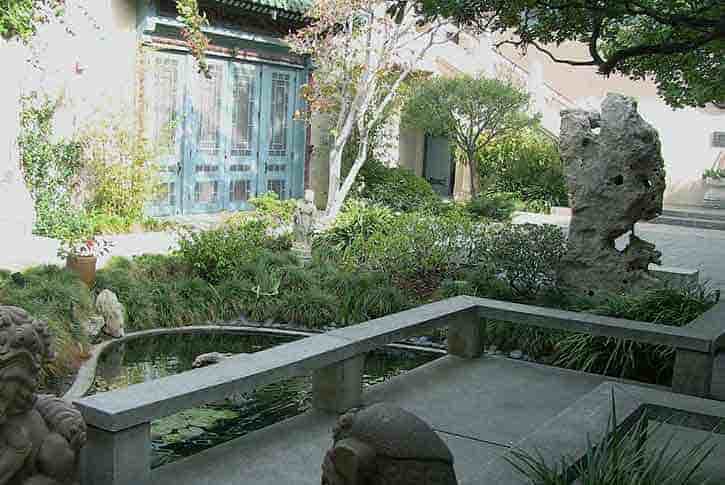
Constructed in 1924 for art collector, dealer, and entrepreneur Grace Nicholson as her residence and personal gallery, the building was gifted to the city in 1943 as the “The Grace Nicholson Treasure House of Oriental Art.” Once Nicholson’s collection of 15,000 rare artworks and artifacts made it into the possession of the Pacificulture Foundation in 1971, the building then became known as the Pacific Asia Museum and soon became a listed property on the National Register of Historic Places in 1977.
Visitors are greeted by a building adorned with Chinese decorative elements to emulate the Imperial Palace style commonly found in Asia and are also treated to a central courtyard featuring a garden, small pool, and carvings. Permanent galleries include Snukal Ceramics, The Art of Pacific Asia, Himalayan, Korean, Japanese, South and Southeast Asian, and Journeys: The Silk Road. With the mission to further understand Asian and Pacific cultures through the arts, and considering this is one of the few venues in the country with such focus on the region, this will be one of the most unique museum visits in any itinerary of Southern California.
17. Pasadena Museum of History
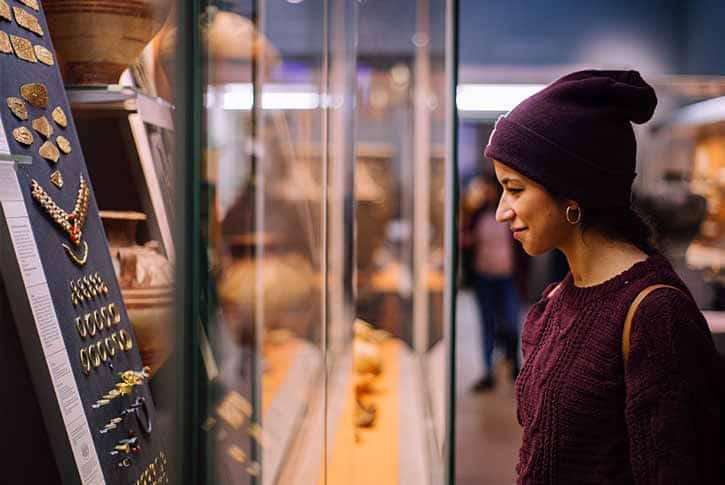
The Pasadena Museum of History, or PMH for short, prides itself as the only institution dedicated to the history, culture, and art of Pasadena and the west San Gabriel Valley. Founded in 1924 and spread over 2 acres, the museum also incorporates the Fenyes Estate, The Curtin House, and the Finnish Folk Art Museum, celebrating the diverse and rich history of the city’s most notorious residents.
The private, non-profit museum houses Pasadena’s largest and most comprehensive collection of artifacts related to the history of the San Gabriel Valley and counts over 1,000,000 photographs, books, manuscripts, maps, and records in its inventory; additionally, PMH’s costume and textile collection include more than 3,000 artifacts dating from the formative 1880 to 1970 period – quite remarkable considering the museum’s collection back in 1924 could barely fit inside one filing cabinet! Whilst there’s plenty to take in during a visit to PMH, for those short on time, you cannot miss a tour of the sprawling Fenyes Estate and the Finnish Folk Art Museum – the former in particular is a popular location for wedding photography.
18. Jameson Brown Coffee Roasters
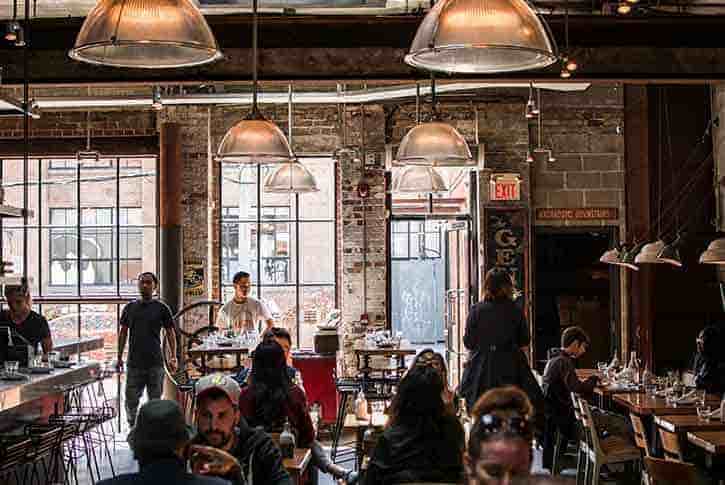
Jameson Brown Coffee Roasters has been the café of choice for Pasadenans since their opening in April 2006 by friends David and Ryan. Wanting to take a more personalized and artisanal approach to a product that millions of Americans run on every day, they roast their beans on-site and develop all their own flavorings and syrups, producing some of the most unique beverage offerings in the state.
Aside from the ever-popular cappuccino, espresso, and drip coffee, their specialty offerings include the Lavender Vanilla Breve, Coconut Breve, Snowball, and Vienna Latte. Seasonal drinks that have been spotted at Jameson Brown include Cardamom Rose, Orange Blossom, Pumpkin Spice, Horchata Latte, and Mochas, such as the Winter White and Peppermint. However, if it’s their renowned beans you’re after, you can’t go wrong with their Ethiopian Guji, the Costa Rica Tarrazu Copa De Esperanza, and their pricy-but-worth-it 100% Hawaiian Kona.
19. Public Art “Pasadena Robinson Memorial”
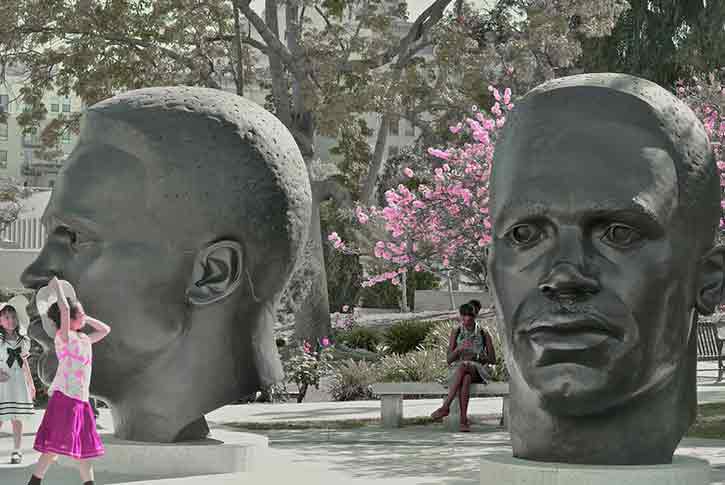
Located adjacent to City Hall on Garfield Avenue, the bronze sculptures of brothers Mack and Jackie Robinson were unveiled in 1997 after a joint fundraising drive by the Robinson Memorial Foundation and members of the Robinson family. Costing $325,000 (over $500,000 in today’s money) at the time, the statues are the work of artists Ralph Helmick, Stu Schecter, and John Outterbridge and, with the oversized busts standing at nine feet tall, are certainly as head-turning as the brothers were during their era of challenging racial divides in American sport.
Mack Robinson’s claim to fame was winning a silver medal behind Jesse Owens in the 200m at the 1936 Berlin Olympics, whilst his perhaps more famous bother Jackie Robinson was the first African-American to play Major League Baseball in the modern era. The statue of Jackie looks towards Brooklyn, where he broke the baseball color line starting at first base for the Brooklyn Dodgers in 1947, whilst the statue of Mack is facing City Hall, who had a complicated history fighting for recognition and equality in the city and even in later years sought measures to fight against street crime and violence.
20. La Grande Orange Café

Located within the old 1934 Santa Fe Depot waiting room at Del Mar Station, where studio-era stars such as Clark Gable, Mae West, and Will Rogers have stepped off and been mobbed by paparazzi and autograph hunters, La Grande Orange Café aims to provide quality cuisine and honest regionally-inspired comfort food using fresh and locally-sourced ingredients from the South California Region.
A visit to La Grande Orange must begin with a serving of their Hors d’oeuvre specialty (and 90’s retro throwback) Devilled Eggs. We also love their Shredded Kale and Quinoa Salad, the Brussels Sprout Salad, and the Del Mar Salad, whilst from their Mesquite Grill the Short Rib Tacos and Ahi Tuna Tacos fly out of the door. With their sister restaurant The Luggage Room Pizzaria located next door, and The Otis Bar serving up some quality cocktails, a stop at the Del Mar Station is a great way to end a walking tour of Pasadena.
21. Judson Studios
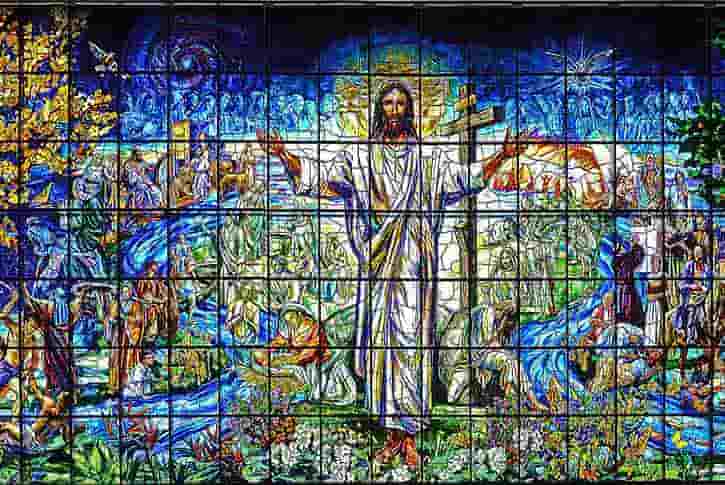
Whilst the art of stained-glass windows has been around for thousands of years, William Lees Judson and his three sons made it into a revered art form at the pinnacle of the American Art Nouveau movement. Now the oldest family-run stained-glass studio in America, the facility produces fine art pieces that capture the beauty within our world through stunning luminosity and design. Whilst approximately 85% of their pieces are commissioned for religious institutions of various faiths, some of their artist collaborations are worth researching and have even delved into the mediums of marble carving, mosaics, carved and etched glass, sculpture, and furniture.
Situated on the banks of the Arroyo Seco, the studios have been in their current location since 1920 and were listed on the National Register of Historical Places in 1999. Taking a tour of the facilities allows visitors to see the river’s influence in Judson’s artwork – both mediums make use of refraction to showcase the true beauty of both water and glass. We also highly suggest a visit to the gift shop – the stunning designs will blow you away and leave you wanting to purchase everything.
22. Robert R. Blacker House
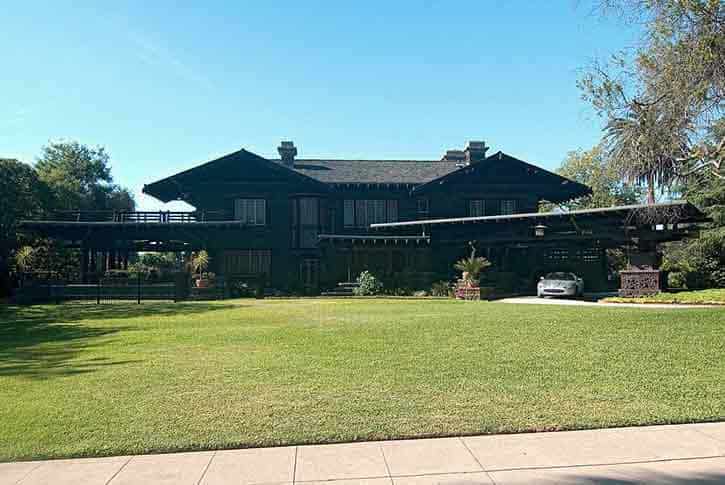
Another property that adds to Pasadena’s Bungalow Heaven reputation is the Robert Roe Blacker House, or as locals refer to it – Blacker House. Originally built in 1907 for Robert Roe Blacker and Nellie Canfield Blacker, it garnered its reputation based on being part of the design portfolio of lauded architects Charles and Henry Greene. Later designing the Gamble House, the Greene brothers spared no expense on the construction and fitting out of the property, costing a lavish $100,000 at the time (which is $2.74 million in today’s money adjusting for inflation).
Following the death of Robert Blacker in 1931 and Nellie Blacker in 1946 with no heirs, the custom interiors were so desired by antique collectors nationwide that some residents would gut the interior fittings to sell at auction, easily making back their initial investment. One living room chair from the Blacker House was sold at Sotheby’s for over $900,000 in 2007, and pieces are often found in museums and the hands of Greene and Greene collectors. Registered as a National Historic Landmark in 1986 and having undergone a restoration between 1994 and 1998, you can view Blacker House in one of the most iconic films of the 80’s – the interior shots of Doc Brown’s house in Back to the Future (1985) were taken in a pre-restoration Blacker House.
23. Mt Wilson Observatory
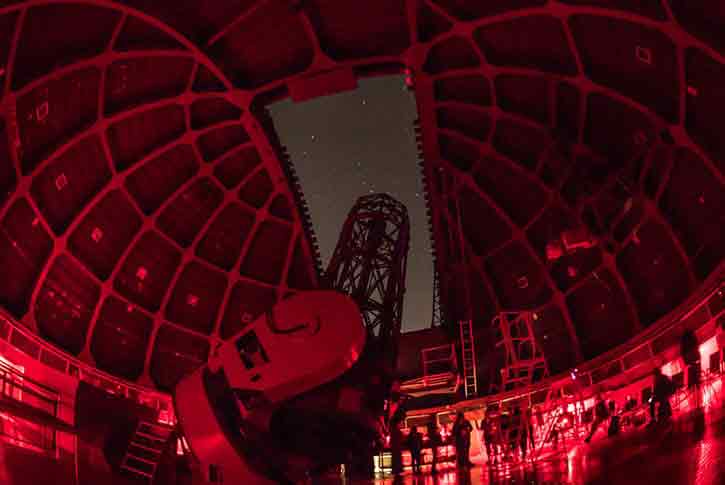
Located at 1742m above sea level in the San Gabriel mountains, Mt Wilson Observatory has been at the forefront of astronomical study for over a century. Founded by George Ellery Hale (who also co-founded CalTech) in 1904, the facility’s greatest claim to fame has been the two key discoveries by Edwin Hubble using his 8ft wide Hooker Telescopic set up – the existence of galaxies beyond the Milky Way; and the magnitude at which redshift was moving and his subsequently publishing a paper in 1929 that proposed the universe was constantly expanding.
Since then, the observatory has acquired some pretty epic hardware, including several interferometers and the CHARA (Center for High Angular Resolution Astronomy) array. With walking tours held regularly on weekends by docent staff and regular STEM educational tours, Star Gazing events, cosmic soundscape experiences, and a lecture series, there’s plenty on offer for members of the public to see one of the San Gabriel Mountain’s modern landmarks.
24. Monrovia Canyon Park
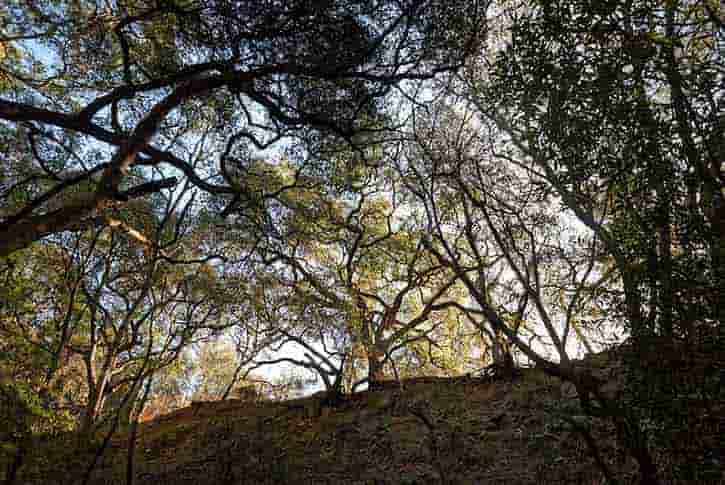
Currently undergoing restoration efforts following the 2020 Bobcat Fires, Monrovia Canyon Park has been a welcomed nature escape for Pasadenans for decades. The 80-acre park features trails ranging from a brisk 1-mile walk to a challenging 8.3-mile steep hike, with the adventurous rewarded with views of a stunning waterfall at the midpoint.
Novice hikers will love the naming system at Monrovia Canyon Park – it’s far easier to remember Ben Overturff Trail and Cunningham Overlook Trail than a trail that is only identified by distance or color. There are also camping facilities, a nature center, and Deer Park cabin for the holding of events, plus opportunities for nature lovers to spot squirrels, snakes, and the much loved and feared Californian Black Bear.
25. Jet Propulsion Laboratory
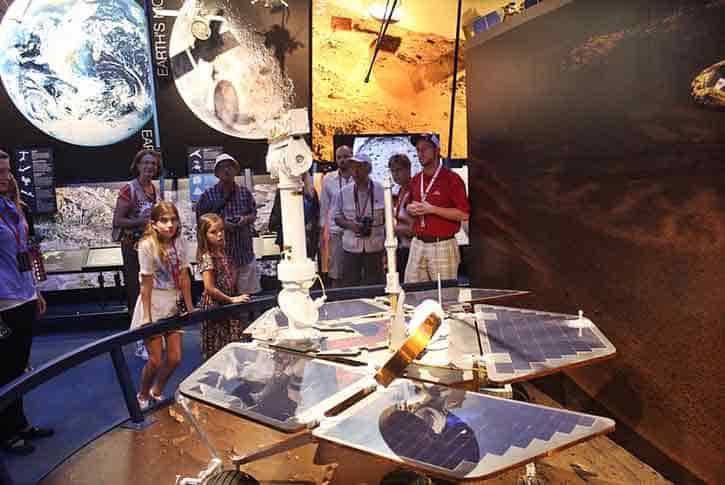
Run by the California Institute of Technology (Caltech) for NASA, the Jet Propulsion Laboratory is located in nearby Flintridge. It was launched in 1936 after some CalTech graduates wanted to experiment with rocket motors in a location that wouldn’t threaten the main Caltech campus. Now, despite the name, it no longer makes jets nor rockets; however the now 6000-strong team has been instrumental in the development and operation of NASA’s Deep Space network, including the Voyager probes and the headline-stealing Mars Curiosity Rover.
Offering public tours, lectures, academic competitions, and open house days featuring the Charles Elachi Mission Control Centre and their Spacecraft Assembly Facility, the Visitors Center and Museum features exhibits on the laboratory’s missions to all planets in the Solar System, space photography, satellite launches and Space Rocks such as Asteroids, Meteor, and Comets.

